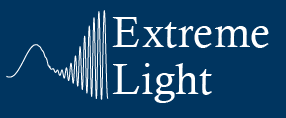|
Work with us:
If you are interested in working with us (PhD studentships and post-doc positions) or in collaborating with us, please contact us - daniele.faccio@glasgow.ac.uk |
|
Light in Flight Photography
A new generation of single photon detectors and cameras allow us to record images at a trillion frames per second, sufficient to freeze light in motion. We can then investigate a range of fundamental phenomena, such as time-reversal of superluminal events. We are also using these cameras for a new generation of imaging challenges: imaging behind corners and imaging through scattering media. |
|
Near-Zero-Index Optics
The physical properties of materials can be tailored by nano-structuring (so called MetaMaterials) and, as discovered more recently, by working in very specific wavelength regions where the refractive index is very close to zero. Not all materials exhibit such a behaviour or do so in a readily accessible region but an important class of transparent conductive oxides (ITO, used to cover your cell phone screen) does just this. We are investigating these materials and the near-zero-index regime for new physics and applications such as fundamental studies (creation of photon pairs from the vacuum) and applications that rely on the very strong response to external fields of these materials for the control of both classical and quantum states of light. |
|
Photon Superfluids
In 1969 Penrose predicted that matter falling into a rotating black hole could gain energy from the rotational motion of the spacetime geometry. A few years (1971) later a similar concept was proposed by Zel'dovich who realised that waves may be excited from the quantum vacuum state by a rotating black hole or, by analogy, from a rotating metallic object. The amplification of waves from a rapidly rotating object is now known as superradiance. These ideas formed the foundations for Hawking's prediction that black holes might evaporate through the emission of entangled pairs of photons excited from the vacuum. |
|
Quantum sensing
Hong-Ou-Mandel (HOM) interference is an exquisitly quantum effect: two photons hitting a beamsplitter from opposite sides and at the same time will exit bunched together. This effect can be used to precisely time the propagation of photons thorugh free space or through a material. We have used to demonstrate that photons travle slower than speed of light in a vacuum and also that ``twisted'' photons (photons with angular momentum) travel slightly faster than un-twisted photons. By applying information theory concepts to the experiment design, we have also shown that the ultimate resolution of a HOM interferometer can rival that of standard phase-sensitive interferometers, achieving attosecond time-of-flight resolution. Combining this high-precision technique with quantum imaging techniques will hopefully lead to improved microscopes. |





